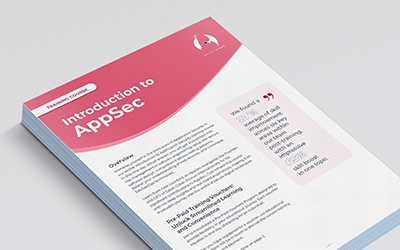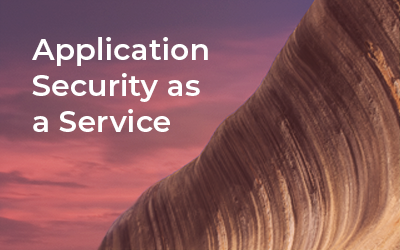Cloud adoption across Australia has increased significantly in recent years. An IDC whitepaper commissioned by Microsoft forecasted public cloud spending in Australia to increase from A$12.2 billion in 2022 to A$22.4 billion by 2026. This trend also aligns with cloud-based applications gaining popularity and developers using the cloud to build apps.
Cloud security encompasses controls and policies to protect cloud-based systems, data, and infrastructure from cloud security threats and vulnerabilities. Cloud security observability involves continuously monitoring and assessing cloud-based systems and services for these threats and vulnerabilities. Here are five reasons we at Galah Cyber believe in prioritising it.
Source: IDC.
Improve visibility over the cloud
Shifting to the cloud often means relinquishing direct control over some security measures because the cloud provider will have protections to secure the infrastructure. However, your organisation must take responsibility for cloud security observability and securing data, users, and applications. This approach is a shared responsibility model; while it offers some benefits, it can make overseeing all aspects of cloud security difficult.
Cloud security observability improves visibility by handling what your organisation is responsible for, such as operational workflows, user activities, and application performance within the cloud environment. Cloud security observability tools enable your organisation to monitor these components, offering visibility across cloud services and platforms.
Stay abreast of compliance requirements
A 2022 report by Gartner predicted that by this year, 75% of the world’s population would have their data covered under privacy regulations. Cloud security compliance has also become a higher priority in Australia as high-profile cyber attacks have compromised businesses of all sizes.
Cloud security observability can help your organisation improve compliance with necessary regulatory frameworks and standards. For example, organisations complying with PCI DSS must fulfil a requirement to monitor their systems consistently.
Cloud security observability supports cloud security compliance by providing real-time visibility into all cloud-based activities. Your organisation can detect and rectify potential compliance issues before they escalate into serious violations. Automated tools can alert teams to unauthorised data access or transfer, potential data breaches, or misconfigurations that could lead to compliance failures. When paired with experts who understand how to apply relevant frameworks and regulations, your organisation can improve its alignment with compliance requirements.
Identify and address misconfigurations
Misconfigurations commonly occur in cloud environments, often stemming from human error. For example, someone might grant users unrestricted access rather than adhere to the principle of least privilege. Misconfigurations like these can lead to unauthorised access, data leakage, and other exploitable vulnerabilities that give attackers easy entry points into your company’s infrastructure.
Cloud security observability assesses your cloud applications to find misconfigurations. Completing this proactively mitigates the risk of attacks and ensures the cloud infrastructure remains secure against cloud security threats.
Quickly respond to cloud security issues
Cloud security observability identifies cloud security threats in real time and enables your organisation to quickly address vulnerabilities or suspicious behaviour. Continuous monitoring detects and addresses issues immediately, allowing your organisation to address them before they escalate into significant threats. Promptly responding to threats minimises potential damage, contains the breach, and prevents further access to sensitive information.
Improve security management through automation
Managing security across multiple cloud platforms and providers introduces complexities due to varying tools, controls, and protocols. This can create gaps in your company’s security posture and increase vulnerability to cloud security threats. Cloud security observability will centralise security protocols and provide a comprehensive view across all cloud environments, enabling effective management of security policies, controls, and responses.
Automated tools support real-time threat detection and response, enabling quicker mitigation of security incidents. While your cloud provider will have some tools your business can leverage, bringing in other solutions and experts to guide the cloud security observability strategy is also best practice. Your monitoring tools should also integrate with your existing infrastructure.
It is pertinent to note that while automation boosts cloud security observability, your organisation should not rely solely on these solutions. Your strategy should also include experts who understand cloud security and can guide your organisation in the right direction.
Conclusion
Getting security right is essential if your organisation plans to move some or all operations into cloud environments. While cloud providers offer some security measures, the cloud comes with unique challenges that require an observability strategy to address issues as they arise. Cloud security observability enhances visibility over one or multiple cloud environments. It also helps your organisation maintain cloud security compliance and address misconfigurations that might lead to a breach.
Why choose cloud security observability from Galah Cyber?
Ensuring robust cloud security is paramount for organisations operating in today’s digital landscape. By investing in cloud security observability, you can gain the visibility and control needed to protect sensitive data and maintain compliance.
Galah Cyber offers a comprehensive and tailored approach to cloud security. Our AppSec as a Service solution provides ongoing monitoring, threat detection, and expert guidance to address your unique security challenges. Choose us for a dynamic and proactive approach to cloud security.
Visit our AppSec as a Service page for more details.







